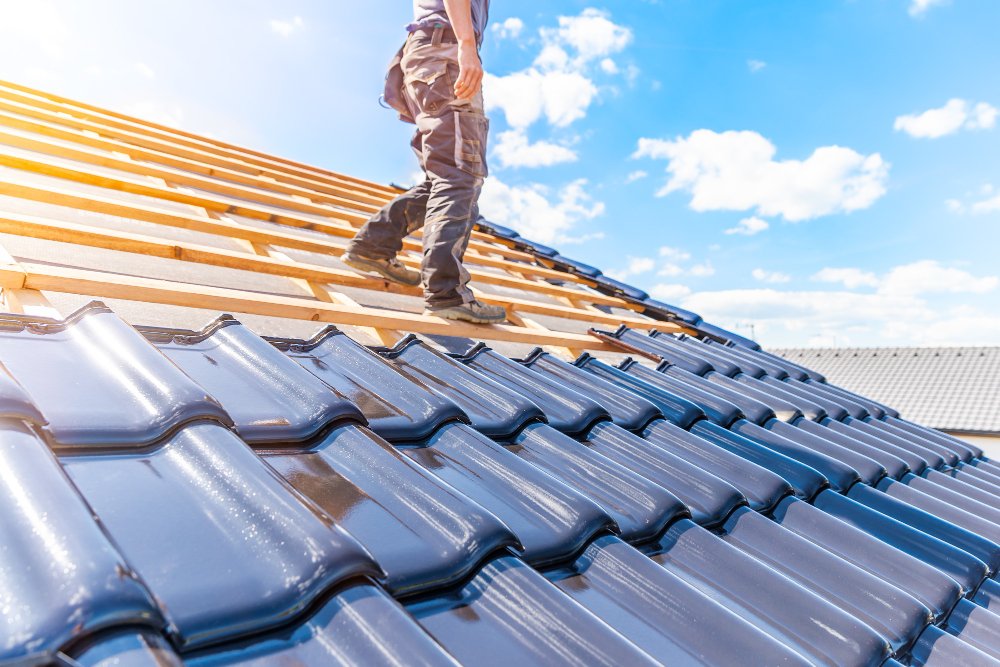How to Assess Various Roof Alternatives for Your Structure Requirements
Evaluating roofing options for your structure needs a thorough approach that considers various elements such as the intended use of the structure, neighborhood climate conditions, and material attributes. It is vital to weigh the benefits and drawbacks of different roof covering kinds, from asphalt tiles to steel and clay floor tiles, while likewise considering first expenses and long-lasting maintenance. Additionally, understanding power effectiveness and aesthetic appeal can influence your decision. As you consider these considerations, one question continues to be: which variables will eventually direct your option for a lasting and visually pleasing roof covering service?
Analyzing Your Structure's Needs
To successfully examine roofing options, start by completely evaluating your building's demands. Start by considering the structure's planned use, as various structures might demand differing roofing specs. For instance, property roofing systems frequently focus on aesthetic appeals and insulation, while commercial structures may concentrate on durability and load-bearing capability.
Following, review the local climate problems that will certainly influence roof covering performance. Factors such as temperature variations, rainfall degrees, and wind patterns can affect product option and design. A roofing system that masters a pleasant environment may not do also in locations vulnerable to heavy snowfall or extreme heat.
Additionally, evaluate the architectural stability of your structure. Ensure that the existing framework can sustain the picked roofing products, particularly if taking into consideration heavier alternatives. It is likewise important to examine any local building regulations or laws that may dictate details requirements for roof covering systems.

Comparing Roof Products
Once an extensive analysis of your structure's needs has actually been completed, the next step involves comparing different roofing materials. Each product provides distinct benefits and disadvantages, making it necessary to straighten your choice with your certain needs and conditions.
Asphalt roof shingles are commonly acknowledged for their affordability and ease of setup, making them a preferred choice for property buildings. On the other hand, steel roof, known for its resilience and longevity, can hold up against rough climate condition but may include a higher first financial investment.
Clay and concrete tiles give superb thermal insulation and aesthetic appeal, specifically for Mediterranean-style design, yet they require an even more robust architectural assistance because of their weight. Wood drinks offer an all-natural look and excellent insulation residential or commercial properties yet may require much more upkeep and are vulnerable to fire hazards.
Examining Cost and Spending Plan
Evaluating your roof covering choices demands a careful analysis of cost and spending plan factors to consider. The general allocate a roof task comprises a number of factors, including product prices, labor expenditures, maintenance, and potential long-lasting financial savings. It is important to develop a clear budget before exploring certain roof materials, as this will certainly direct the decision-making procedure and help you prevent overspending.
Begin by getting quotes from numerous service providers to understand labor expenses in your region. Make certain that these estimates include all needed solutions, such as elimination of the old roof, setup, and any type of added features, like insulation or air flow renovations - Perrysburg Roofer. Next, examine the cost of different roofing materials, taking into consideration both first setup prices and anticipated life expectancy

Understanding Power Effectiveness
Energy performance plays a vital function in the choice of roof materials and systems, dramatically impacting both energy usage and general comfort within a building. An appropriate roof can boost thermal performance, minimizing the need for heating and cooling systems, which consequently lowers power expenses and decreases environmental impact.
When reviewing roofing options, consider products that show rather than soak up warm. In addition, correct insulation and ventilation are important to optimize the power effectiveness of the entire roof system.
Another vital aspect is the roof's long life and maintenance needs. Sturdy materials that require less constant substitute add to long-term energy financial savings. In addition, the power performance of a roof can likewise be analyzed via its conformity with recognized sustainability rankings such as ENERGY CELEBRITY or LEED.
Considering Aesthetic Allure
A roofing's visual allure considerably affects the total appearance of a building, complementing its architectural style and improving visual check my source allure. Roofer. When examining roof alternatives, it is vital to think about just how the picked material, color, and design will integrate with the existing structure and area. A well-designed roof can raise also the simplest of buildings, transforming them into visual focal points
Different roof products supply various aesthetic qualities. Traditional shingles may evoke a timeless beauty, while steel roof covering can present a modern-day, streamlined look. Furthermore, the shade of the roofing product Go Here plays a critical duty; lighter tones can make a structure show up more spacious, while darker tones may create a cozier ambiance.
Furthermore, architectural elements, such as dormers and eaves, can enhance the roof covering's aesthetic influence. It is advisable to speak with specialist developers or architects to ensure the picked roof covering choice aligns with the general style intent. Inevitably, a roof covering ought to not just give useful advantages yet likewise contribute favorably to the building's visual, showing the proprietor's taste and the personality of the surrounding atmosphere.
Conclusion
